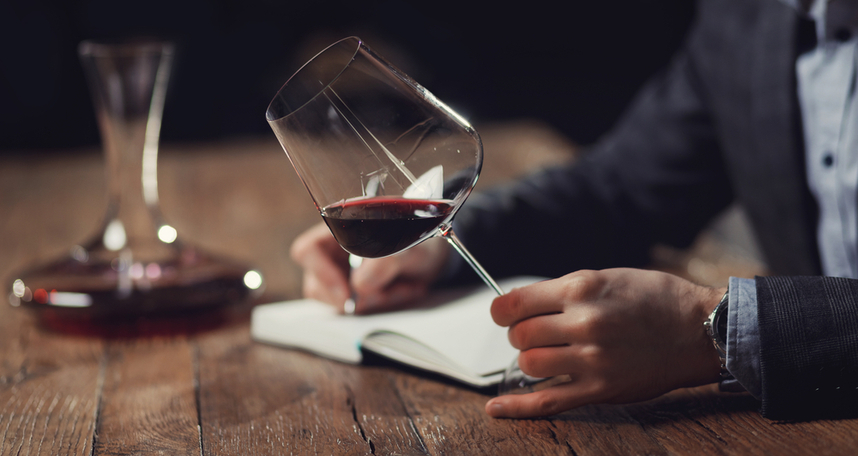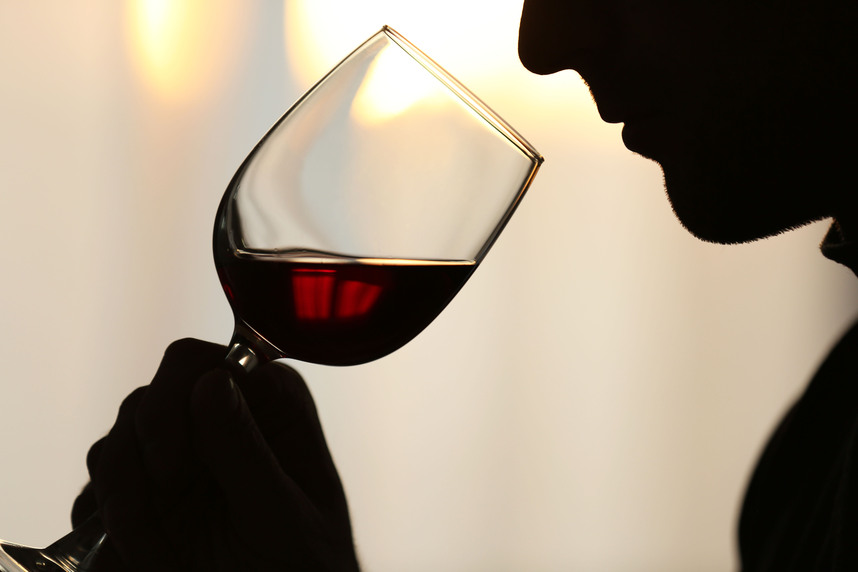Fruity, delicate, full-bodied, not to mention tannic... how many complex terms escape the lips of sommeliers during a tasting! As abstruse as they may sound, each one corresponds to a characteristic, perceptible thanks to a precise course of study and a great deal of experience.
Tasting a good wine, however, is not only the prerogative of these figures: in front of a good label, everyone can switch on their senses and experience the character of an oenological product, starting from recognising the nuances of its colour to understanding its aromas. But how does one taste wine? Simple: it takes eye, nose and palate!
Meaning and first steps in wine tasting
It sounds like a banality, but it is important to emphasise: to taste a wine, it is not enough to taste it. This is because in a goblet there is not just a drink, but a journey from the cultivation of the vine to the bottling, and which takes into account the experience of those who have contributed to its production.
Tasting is a sensory and emotional experience that, with a flexible mind, a willingness to learn and a bit of training, is open to anyone. The first steps to a guided tasting are not complex:
- One must first arm oneself with a fundamental tool: patience. Tasting is a slow process, a sensory investigation that requires time and contemplation. A blank sheet of paper and a pen might be useful for jotting down a few notes, as well as for making the first visual examination, as will be seen in the next section.
- It is important to choose a setting that is as neutral as possible. A room full of other smells could in fact compromise the experience.
- To train oneself to recognise aromas and flavours, it is best to start with just two wines, one more familiar and one never tasted before, to make a comparison.
- When tasting wines, one proceeds in order of intensity, starting with the lightest to the most full-bodied. Usually one starts with dry sparkling wines, continuing with whites (first the delicate, then the more intense), rosés and reds. For the latter, it is also important to take ageing into account, tasting the young wines first and then the older ones. Only at the end can one close with the sweet wines.
- For a perfect tasting it would be best not to swallow the wine, but to hold it in the mouth for a few moments to experience it through the senses, and then spit it out. The mouth should also not be rinsed out between tastings: it is best to wait for the wine's notes to run out spontaneously before proceeding with the next tasting.
The eye is important too: the visual examination of wine

The first examination involves looking at the product, starting with the label. Reading the organoleptic characteristics could be misleading or take away from the experience itself, but it is important to learn some basic information, such as the appellation, the area of origin, the type of soil on which the vines were grown.
Where this information is not present, it is advisable to do some research before the tasting, so as to learn more about the properties of the wine you are about to approach.
Next, the bottle is uncorked and the cork is sniffed, if it is corked. This first approach can indeed provide the first aromatic clues.
The white sheet of paper can be useful to continue the visual analysis: by bringing the glass closer to it, it is possible to compare the colour of the wine with the whiteness of the page, assessing the chromatic characteristics, nuances, clarity and transparency, as well as the presence or absence of effervescence.
Depending on the type of wine, one can notice a ruby red colour, as in the case of a Langhe Nebbiolo DOC 2020, perhaps with violet hues, or straw yellow with greenish reflections, like a Verdicchio, or golden.
At this stage of analysis, it is also useful to examine the 'bows' (also called tears) by swirling the wine in the goblet, to observe the persistence of the wine drops on the walls. Fuller-bodied wines glide more slowly, while lighter wines are also characterised by less persistence.
How to taste wine through aromas: the olfactory examination
Never before has the choice of the perfect goblet been as crucial as in this step. Indeed, the olfactory performance of the product depends on the shape and characteristics of the glass.
It is no coincidence that sommeliers undertake a specific course to learn wine-tasting techniques: the aromatic examination requires a great deal of experience in order to grasp the scents, especially the less obvious notes.
To understand how to taste a wine in the right way, it is essential to proceed step by step. The first step is to bring your nose close to your glass and take a deep breath with your eyes closed, then step back and attempt an association with the first aromas that come to mind, noting them down on the sheet of paper.
At this stage it can be helpful to try to identify only the main scents, i.e. floral, spicy or fruity. Which of these aromas is predominant?
To give a concrete example, the olfactory analysis of a Primitivo IGT - one of the Apulian wines most appreciated by connoisseurs - reveals hints of ripe fruit, while in an aromatic white such as Gewürztraminer, spicy notes of cloves are clearly recognisable.
Once you have identified this information, you can rotate the wine further in the glass to go a little deeper with the olfactory examination. What kind of fruit or flowers are we talking about? What spices come to mind? Are there hints of wood or honey?
It is repetition that makes the tasting perfect: about five minutes after the first olfactory examination, it is good to try again, to re-examine the aromatic bouquet in search of something new, or simply for confirmation.
The fundamental role of the palate: the gustatory examination
Those less familiar with wine-tasting techniques tend to go straight to tasting after uncorking the bottle, when in fact the taste examination should be the last step.
After enjoying the aromas inside the glass, the palate can be called into play by sipping a small amount of wine. A final aftertaste can also be noted?
Tasting allows one to understand the degree of freshness of a wine, the intensity of the flavours, the body and persistence in the mouth. What kind of savouriness does it have? Does it have a mineral aftertaste - like a Lugana DOC 2021 - or is it characterised by a softer flavour like a Dolcetto? Does it leave bitter notes in the mouth?
Even in this case, it is not easy to perceive the organoleptic characteristics at the first taste, but with a little training, distinguishing between the different aromas and flavours of wine will become an increasingly automatic operation, even when it is necessary to pair it with hors d'oeuvres, first courses, meat and fish dishes and tasty desserts.
Are you ready to put these tips into practice? Choose the best wines to taste on Svinando!

